The Hobbit’s vfx supervisor Joe Letteri talks about the vfx challenges of returning to J.R.R. Tolkien’s world nine years after the last Lord of the Rings movie cast its spell in theaters.
When the team at Weta Digital got word that they were going to work on the prequel to the Lord of the Rings series, they knew that the new project would be much more demanding than the multi-Oscar-winning blockbuster trilogy. The Hobbit: An Unexpected Journey had more CG-created characters, visited many more new fantastic locations and dealt with size differences between the story’s reluctant hero Bilbo Baggins (portrayed by Martin Freeman) and the rest of players. Not to mention that the film was being shot in the new 48-frames-per-second format—which offers more digital clarity and invites audience scrutiny on every single shot of the 169-minutes-long epic.
In director Peter Jackson’s first chapter in the Hobbit trilogy, we find Bilbo (Frodo’s uncle) on a treacherous mission to reclaim Erebor, a once-prosperous dwarf kingdom that has been taken over by the powerful dragon Smaug. He is sent on this journey by the LoTR’s sage wizard Gandalf the Grey (Ian McKellen) and joined by 13 rambunctious dwarves, many of whom required digital size tweaks to stay true to the characters’ diminutive proportions.
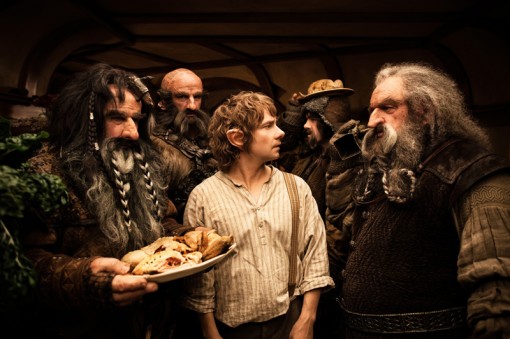
As the film’s visual effects supervisor and head of Weta Digital, Joe Letteri, tells us in a recent phone interview, the team was ready to tackle these and many more challenges and to improve upon the work they had done in the first Lord of the Rings movies.
“It was wonderful to be able to return to Middle-earth,” recalls Letteri, who has won the Oscar four times for his vfx work on the second and third Lord of the Rings movies, Jackson’s King Kong and James Cameron’s Avatar, and nominated for I, Robot and Rise of the Planet of the Apes. “We were familiar with a lot of the places we were visiting, and for new locations such as the Misty Mountains, where the Thunder-Battle takes place, we had a good idea of what we were going to do. It was really a homecoming for us and a chance to go back to these fantastic locations in New Zealand.”
Of course, a lot can happen in the course of nine years. New technologies allow for more realistic motion-capture rendering of characters such as Gollum (Andy Serkis). Also the fact that Jackson shot the film using 48 RED Epic digital cameras called for the cameras to be paired and positioned a specific distance apart. Although these RED cameras are a lot smaller than regular film cameras, their lenses make them impossible to be placed close together, so the filmmakers had to use custom camera rigs created by 3ality Technica to create the project’s specialized mounts.
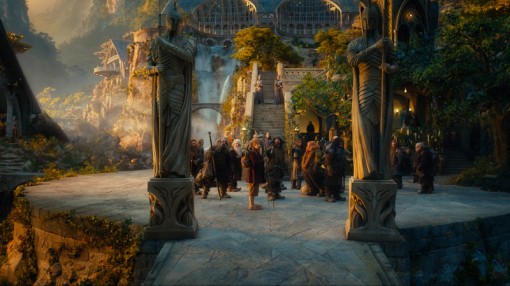
Matters of Size
The addition of 3-D to Middle-earth also meant coming up with new ways get Bilbo and the dwarves to look shorter than Gandalf. In the previous films, they used forced perspective and had McKellen positioned closer to the camera to create this illusion, but they had to get more inventive this time.
“We came up with this idea, especially because we wanted to keep the cameras moving, to synchronize two cameras together on two separate stages,” notes Letteri. “Gandalf was on one stage, the dwarves were on another stage, Peter could see them both in his monitor together and direct both of them, but they both had to keep in their heads where this other virtual person was going to be.”
Many reviewers have pointed out that Gollum’s appearance more than halfway through the film is one of the epic’s biggest draws. It’s also one of those instances of complex technology working hand in hand with Andy Serkis’ phenomenal performance to create something truly magical.

“Back when we were working with Andy on the second movie, it was basically a science experiment,” says Letteri. “No one knew you could use motion capture successfully to create a major character in a film. Andy was originally just hired as a voice actor. He was just going to read his lines and we were going to keyframe the performance. But Andy wanted to jump in the suit as he was performing. He was bringing such amazing energy into to scenes that we decided to capture him on the set and use that performance.”
Letteri says the Bilbo-meets-Gollum scene was the first one they worked on for The Hobbit.
“Andy walked on the stage in his mo-cap costume, and we were all brought back to Middle-earth immediately,” he says. “Now we have these thin layers of translucent skin, and we have more dramatic detail in the eyes alone than we had in the original film. He’s had a lot of touch-ups, but he’s basically the same character.”
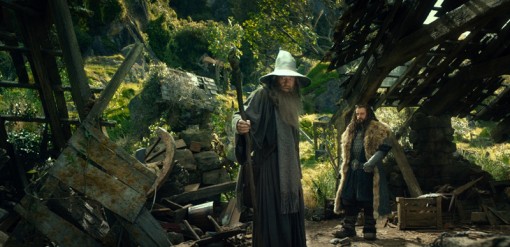
“Gollum is still my favorite character and his encounter with Bilbo in the cavern is my favorite scene to watch,” says Letteri. He also reveals that since the movie takes place 60 years before the events of the Lord of the Rings trilogy, they did toy with the idea of giving Gollum more hair and teeth and making him look younger. “We tried it, but thought he looked too different,” he notes. “He is completely rebuilt with technologies that we didn’t have decades ago, but the core is the same, and you can immediately recognize him as the same as when you saw him last.”
The Sharper Image
Much of the film’s 2,176 vfx shots were impacted by the decision to shoot the film in the 48 fps format. Letteri and Jackson first began discussing the new rate back in 2005, when the two met with James Cameron to talk about the format’s potential. The high-frame rate allows the audience to see the visual effects much, much more clearly than they can in regular 24 fps, and it also doubled the work required to create the visuals.
Both Jackson and Cameron believe that seeing more images each second is more natural because it’s closer to what the human eye actually sees, giving a sharper, more lifelike picture and reducing eyestrain for 3-D movies. Proponents of the higher frame rate say it packs the screen with far more visual information and makes the moving image super-sharp and detailed.
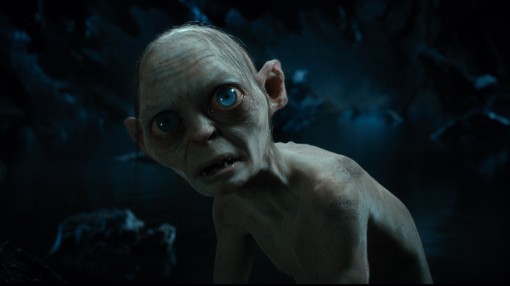
“When you are shooting a 3-D film in the 24-frame format, you can’t resolve motion blur,” says Letteri. “Your eyes want to automatically resolve the blur, but they can’t because two images are involved.
The vfx team had to deal with some pipeline challenges to adapt to this new method.
“You still do your traditional amount of work on each scene, but then you have to add one more pass to refine it for 48 fps,” says Letteri. “Basically, you have to render twice as many frames.”
When asked about the toughest scene in the whole movie, Letteri, who has worked on many of the top vfx-laden pictures of the past 25 years, including Jurassic Park and The Abyss, picks the goblin caverns without hesitation.
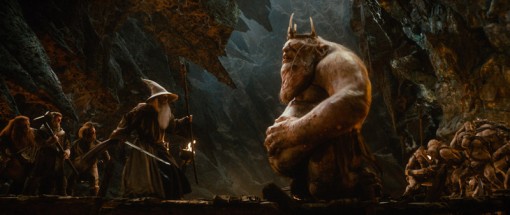
“There is no traditional floor plane. There’s no horizon line. Everything exists in three-dimensional space. We had to build this three-dimensional space and anchor it with places that people can walk around in. The whole place is full of objects that the goblins have scavenged from the real world… Anywhere that you pointed the camera, there were details that needed to be fine-tuned And nothing just happens with the push of a button. A lot has to be crafted by hand and put into position, lit and choreographed to make it work.”
These are only some of the visual highlights of the movie. Letteri and his team also give us three outstanding CG mountain trolls, a grotesque Goblin King, rabbits, hedgehogs, numerous orc models and goblins, as well as soaring giant eagles that provide a bird’s-eye view of Tolkien’s realm. Then, there is the matter of the Goblin King’s phenomenal goiter. Letteri didn’t go into great detail about the hideous growth during our interview, but we have a feeling this and many more mysteries of Middle-earth will be revealed in the Blu-ray extras in the near future.
Warner Bros.’ The Hobbit: An Unexpected Journey opened in theaters nationwide on Dec. 15. The film set a new record during its opening weekend.
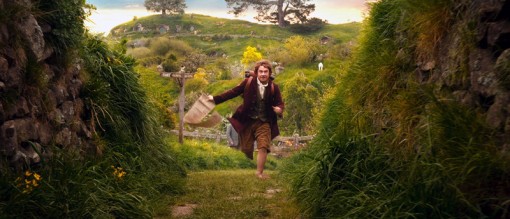
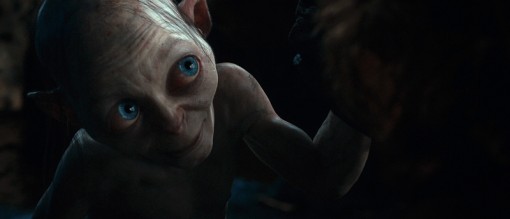
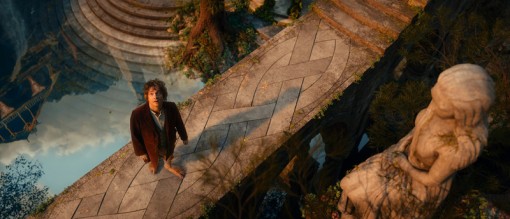
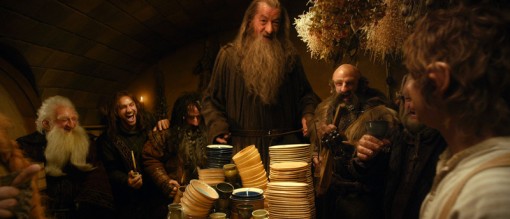
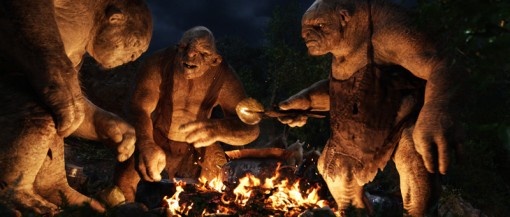
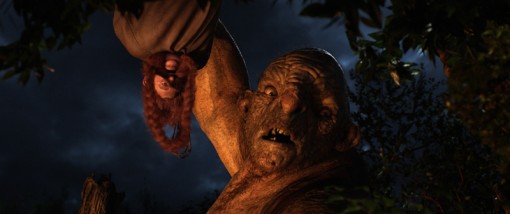
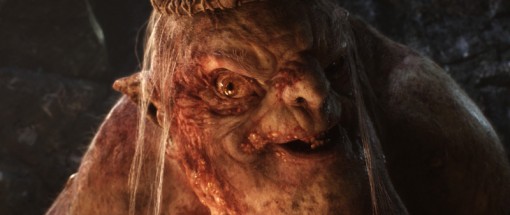
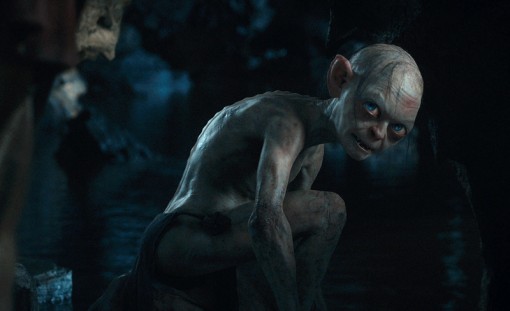






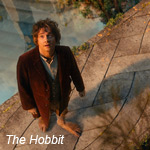


 Win a Funko X Lilo & Stitch Prize Pack!
Win a Funko X Lilo & Stitch Prize Pack! 


